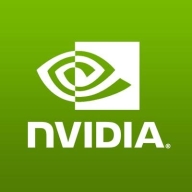

NVIDIA Mellanox and Ubiquiti UniFi Switches compete in the networking hardware category. Data suggests Ubiquiti UniFi may have the upper hand due to its pricing competitiveness and feature set, providing significant value to users.
Features: NVIDIA Mellanox offers high performance, scalability, and the unique RDMA feature useful for handling demanding tasks. It benefits from robust hardware and open-source software, allowing extensive customization. Ubiquiti UniFi excels in centralized management, intuitive interfaces, including a graphical user interface, and ease of integration with other Ubiquiti products, making network management highly accessible.
Room for Improvement: NVIDIA Mellanox could enhance user-friendliness and reduce complexity in setup processes. Potential improvements also include broadening feature documentation for user convenience. Ubiquiti UniFi could expand its advanced configuration capabilities and address known firmware update concerns. Stability during power outages and enhanced support for enterprise-level features would also benefit the product strengthening its appeal to larger organizations.
Ease of Deployment and Customer Service: Ubiquiti UniFi is praised for its straightforward deployment, accessible even to those with less technical expertise. Their customer support is effective, aiding in rapid problem resolution. On the other hand, NVIDIA Mellanox presents a complex deployment process requiring technical proficiency, yet has strong customer support for addressing sophisticated network setups.
Pricing and ROI: Ubiquiti UniFi Switches are budget-friendly, offering a swift return on investment due to their efficient deployment and management capabilities, making them ideal for small to medium-sized businesses. NVIDIA Mellanox, though more expensive initially, justifies its cost with scalable features, focusing on high-demand enterprise needs, which provides long-term value for large organizations looking to invest in their networking infrastructure.
Another solution offered to us was more than double the price, making UniFi a cost-effective choice.
We saw a return on investment within a year, although I believe there's more potential to be leveraged.
I would assess their technical support as good—not the best, but it is good.
The team is knowledgeable and efficient.
the manuals, installation videos, and resources on the website are very good and straightforward.
They have a large customer base that sometimes faces issues due to a lack of know-how in managing the devices.
I rate the scalability as nine out of ten.
If planning for future scalability, choosing switches that support extra modules for fiber optics is advisable.
While we are satisfied with its use in small environments, other products may be needed in very large companies with more than 30 users.
I would rate it a seven because the old versions were not stable, but it is becoming stable over time.
I did not experience any problems the whole year.
The switches are stable and there have been no outages.
If the system is installed, it runs well, with no issues.
I think it's okay; it's the best solution for now for AI data centers.
The current setup is closed and does not allow for integration with non-Ubiquiti VoIP devices or providers outside their ecosystem.
Recent updates have removed many options available in earlier versions, simplifying the interface but limiting control.
The choice depends on the network architecture and planning for the future scalability requirements.
For its performance, it's cheaper.
Our investment in Ubiquiti is about £30,000, and it's a cost-effective solution since there is no subscription fee.
Ubiquiti UniFi Switches are cost-effective, offering similar performance and features as higher-priced alternatives like Cisco or Ruckus.
Pricing is very favorable, with minimal licensing involved.
The biggest advantage is that the vendor is the only one providing no-drop traffic.
The switches enable management from anywhere using the cloud controller, making configuration changes and management easier.
I can manage user connectivity, limit bandwidth, apply MAC address filtering, and it offers POE capabilities.
One of the most valuable features of Ubiquiti UniFi switches is their graphical interface and plug-and-play capability.
| Product | Market Share (%) |
|---|---|
| Ubiquiti UniFi Switches | 7.7% |
| NVIDIA Mellanox | 2.0% |
| Other | 90.3% |


| Company Size | Count |
|---|---|
| Small Business | 5 |
| Midsize Enterprise | 1 |
| Large Enterprise | 2 |
| Company Size | Count |
|---|---|
| Small Business | 44 |
| Midsize Enterprise | 8 |
| Large Enterprise | 1 |
NVIDIA Mellanox empowers data centers with advanced networking capabilities, featuring RDMA, user-friendly interfaces, efficient design, and competitive performance. Designed for Linux-based environments, it ensures robust network automation and AI integration.
Known for its compact hardware, NVIDIA Mellanox delivers dependable networking through its innovative features like no-drop traffic handling and essential data center protocols BGP EVPN and VXLAN. It enhances efficiency with its integration into AI-driven environments and extensive configuration options on Linux. Though the installation and its command-line interface pose challenges for some, its automation capabilities complement complex infrastructures in data centers. Users highlight its scalability in networking, yet seek improvements in documentation, training, and OS transition aspects for smoother integration and enhanced accessibility. Ongoing advancements are anticipated, particularly regarding support response and platform compatibility like Elastic.
What are the key features of NVIDIA Mellanox?In industries operating networking infrastructures, NVIDIA Mellanox offers LAN and AI data center solutions, integral to high-performance computing. Users in sectors utilizing spine-and-leaf topology for top-of-rack and core devices leverage its infinite band speed and EVPN/VxLan capabilities. With support for edge, storage, and border gate switches, it optimizes networking automation beginning with Ethernet-based setups. Organizations gradually enhance complexity as their networking needs evolve.
Ubiquiti UniFi Switches are managed Gigabit switches (Available with 24 or 48 RJ45 Gigabit ports) designed to meet all your network needs while delivering excellent performance. The switches’ excellent network performance is combined with fiber connectivity that includes two SFP ports and the ability to process traffic without putting packet loss at risk.
Ubiquiti UniFi Switches Are:
Ubiquiti UniFi Switches Support These Three Output Modes:
Ubiquiti UniFi Switches Support These Three Input Modes:
Ubiquiti UniFi Switches Features:
Benefits of Ubiquiti UniFi Switches:
Reviews from Real Users
A PeerSpot user who is a Director of Technical Operations/CTO at a consultancy says "The ability to deploy quickly and then having one central location for all the settings are its most valuable aspects."
"The integration with the controller is one of the most valuable features of these switches. They are also very stable. For example, we have some equipment that we haven't touched for four years that is still reliable," says Doru I., Senior solutions architect at Aplix Technologies
Murali S., Management Consultant at a consultancy, explains that “For the world where you have to balance traffic and traffic loads and bandwidth, their GUI makes it really easy because the switches, though they are enterprise grade level two or level three switches, the GUI is designed so that it's easy to set up VLANs where you need to control your traffic so that your phones don't break up and get choppy because of other people loading the network down too heavily."
We monitor all Ethernet Switches reviews to prevent fraudulent reviews and keep review quality high. We do not post reviews by company employees or direct competitors. We validate each review for authenticity via cross-reference with LinkedIn, and personal follow-up with the reviewer when necessary.